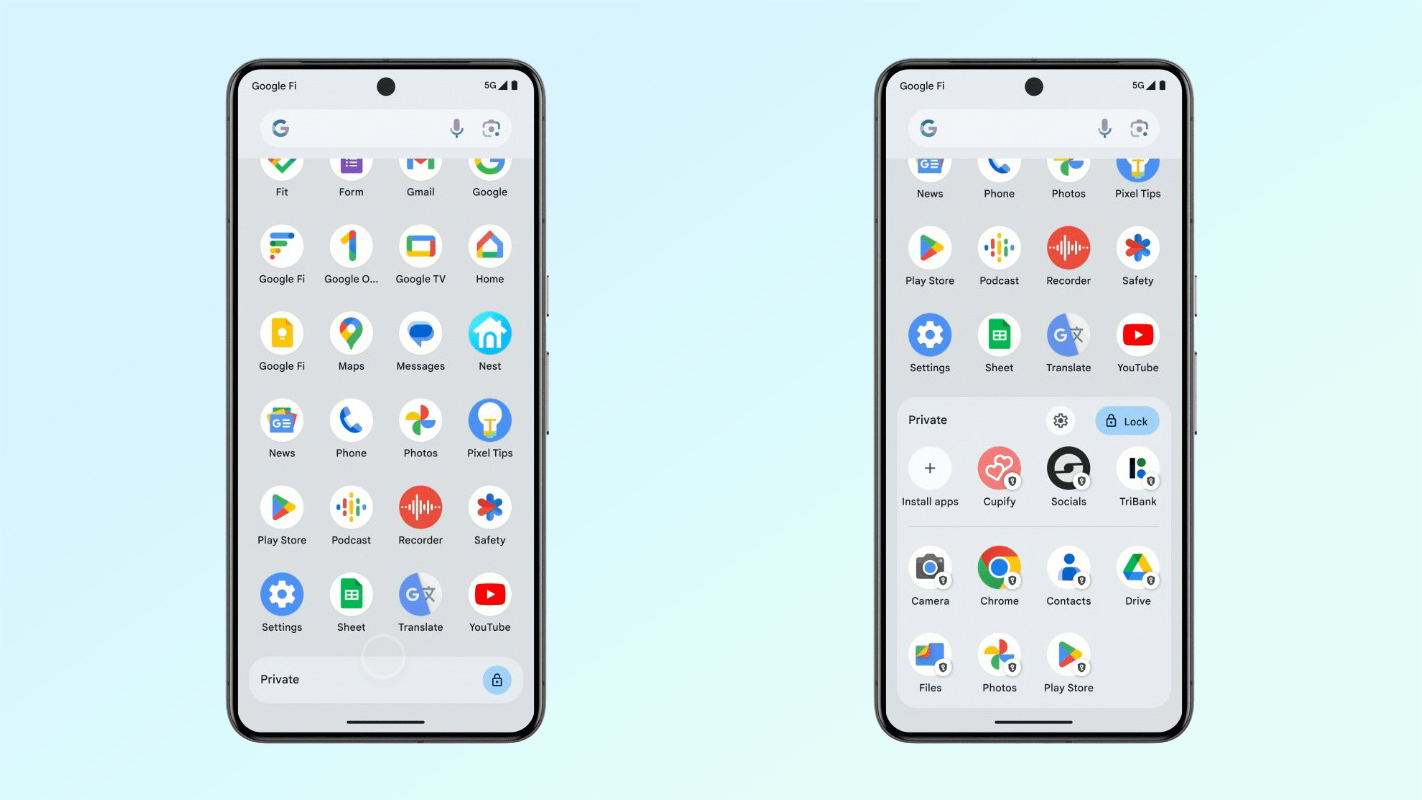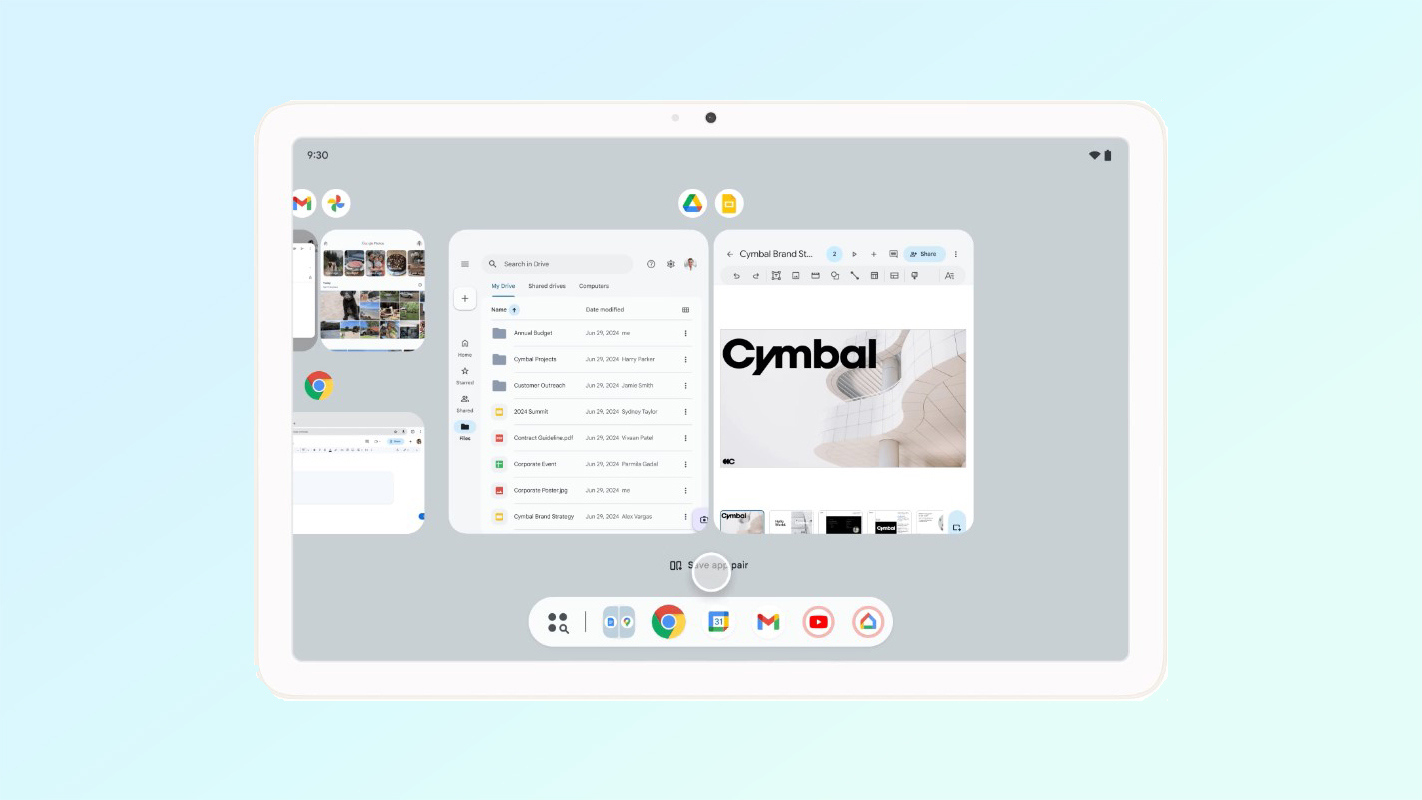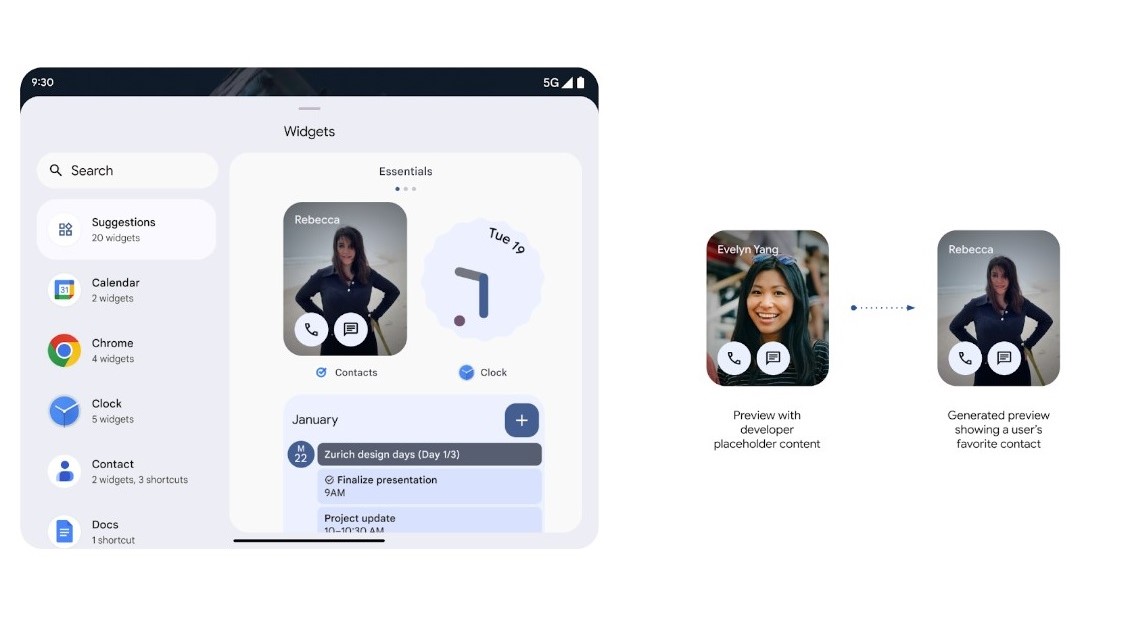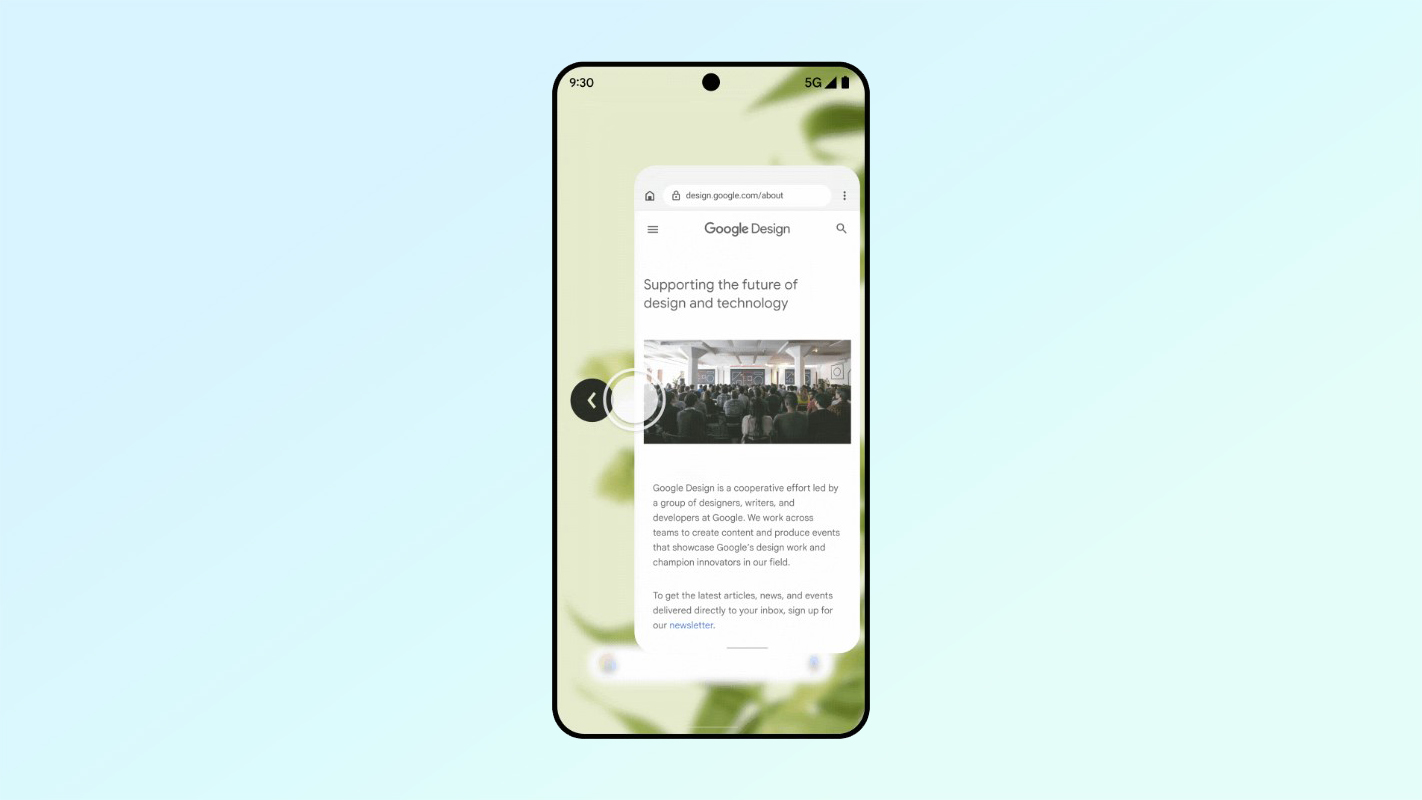Android 15 beta 2 is live now — these are the best new features
Google's just released the next Android 15 beta — and here's what you can expect

The Google I/O 2024 keynote lacked any concrete details about Android 15, instead focussing on Google’s AI ambitions. Today, though, Google revealed a bunch of details about the upcoming software upgrade — and announced that Android 15 beta 2 is rolling out right now.
The big focus in this version of the beta is to help boost user productivity, improve battery life, maximize app performance, accessibility and ensure that users have the best possible privacy and security. The beta is also coming to even more devices, and not just Google Pixels, meaning even more people can check out these features for themselves.
Android 15 beta 2 cheat sheet
- Android 15 beta 2 is available on a variety of Android devices, not just Google Pixels
- Private Space will let you hide and lock away sensitive apps from prying eyes
- Various features ensure that malicious apps can't secretly operate behind the scenes
- Android 15 will feature many efficiency changes to ensure better app performance and battery life
- Multitasking on large screen devices just got better and more customizable
- Predictive Back will show you which screen you're heading back to, so there are no surprises
Which devices can run Android 15 beta?
The first Android 15 beta was only available on select Pixel devices. Nothing older than the Pixel 6, and absolutely nothing made by a different phone maker. Now, Google has revealed that the beta will be available on a number of different phones, including those made by iQoo, Lenovo, Nothing, OnePlus, Sharp, Oppo, Realme, Tecno, Vivo, Xiaomi and Honor.
Google hasn’t specified which devices will be eligible for the Android 15 beta just yet, and that’ll likely be down to the manufacturers themselves. Nothing has already confirmed that the Nothing Phone 2a will be eligible, and there may be other announcements in the coming days.
Android 15 beta 2 features: Security
Private Space

Arguably the biggest security change to Android 15, from a user perspective, is Private Space. This is a separate space on an Android device where certain sensitive apps can be kept separate, and locked under an extra layer of authentication. Some Android phones already offer a similar feature, but now it’s coming to Android proper.
It’s essentially like a partition on your phone, and once the private space is locked all apps inside it get locked down. They don’t appear in the launcher, recents view or settings menu, and they can’t send you notifications. The apps are also deactivated, so they don’t take up valuable power or resources when they’re locked away. Media content and files are also separated from the main space, so nobody else will be able to view or access them.
Selected photo access improvements
App developers will be able to set their app to highlight the most recently selected photos and videos when users have only given permission for partial access to media files. The idea is to improve the user experience for apps that regularly have to request access to new photos and videos.
Sign up to get the BEST of Tom's Guide direct to your inbox.
Get instant access to breaking news, the hottest reviews, great deals and helpful tips.
Secured background app launches
In an effort to protect users and devices from malicious apps, the Android 15 beta 2 stops apps running in the background from being able to bring other apps to the foreground. While background launches have been restricted since Android 10, Android 15 takes it a step further.
Malicious apps can currently bypass launch restrictions with what’s known as “task hijacking”. In these situations, the malicious app launches another app into the foreground then overlays itself on top — pretending to be that app in the process. So there’s a new flag that blocks apps that don’t match the top Unique Identifier, meaning this shouldn’t happen once developers have opted in.
Safer Intents
Android 15 beta 2 is making intents safer and more secure, with the aim of preventing malicious apps exploiting vulnerabilities and misusing intents. So from now on, Intents must have clearly-defined actions before they can start activities or services, while intents that target specific components must match intent-filter specifications.
Android 15 beta 2 features: Efficiency

Foreground service changes
The first change to efficiency in Android 15 comes as changes to how foreground services operate. Foreground services keep apps running in an active state, but this comes with the side effect of using up more power. In the short term that’s not so bad, but if you leave things running longer than they need to, it’s going to tank your battery life throughout the day.
So Google added a new system called Service.onTimeout that puts a 6 hour limit on dataSync and mediaProcessing. After those 6 hours are up, both services are pushed to the background and won’t be running anymore.
16KB page support
Android 15 beta 2 has added support for larger page sizes, up from the 4KB standard all the way up to 16KB. The idea here is that devices with configured 16KB page sizes will be able to reduce power draw during app launch (by 4.56% on average and improve the speed the camera app opens. Google says the average improvement is a 4.48% faster hot start and a 6.6% cold start.
This change also means reduced app launch times when the system is under memory pressure (3.16% lower on average) and around 1 1.5%/0.8 second improvement to system boot time. So by adding these changes, Google is offering app developers the chance to take advantage of these improvements.
Efficient AV1 software decoding
VideoLan’s AV1 software decoder, called dav1d, comes to Android 15 beta for devices that don’t have hardware that supports AV1. It’s designed to offer 3x better performance than legacy software-based decoders, and will be backported back to devices running Android 11 and newer.
ANGLE for the Vulkan graphics API
Vulkan has been the go-to Android graphics API since Android 7.0, designed to improve game and app performance with support for multiple CPU cores and reduced CPU driver overhead. Android 15 offers ANGLE as an optional layer for developers, who can run it on top of Vulkan. It’s designed to standardize the Android OpenGL and improve compatibility and possibly performance as well.
ANGLE will go into testing on all devices later this year, and will be the default driver on many devices released in 2025.
Android 15 beta 2 features: Other features
Improved large screen multitasking

Upgrading larger screen devices, like the Pixel Tablet, will give users better ways to multitask. These extra features include the option to pin the taskbar, quickly switch between apps or save their preferred split-screen combinations for faster access.
Better font support
We’ve already seen Android 15 make improvements for various global alphabets in Android, and the second beta pushes that even further. First up is variable font support for Chinese, Japanese and Korean, while Japanese Hentaigana will be getting a brand new font file by default.
These changes will also help to avoid clipped fonts in various cursive and language characters, making it nicer to look at and easier to read.
Widget previews

Apps in Android 15 will be able to provide a Remote View to the Widget Picker. That way they can update the widget preview and show users what it will look like without having to drop it onto their home screen.
More data for Health Connect
Health Connect is adding support for extra health and fitness data types, including skin temperature and training plans. Skin temperature can pull in the information from a wearable or other tracking device, as you’d expect. Training plan support includes completion goals for calories burned, distance, duration, repetition and steps. Performance goals will also be available, and includes as many repetitions as possible, cadence, heart rate, power, perceived rate of exertion and speed.
Predictive back

The back button (or gesture) is incredibly useful, but sometimes it doesn’t always take you where you thought you were going to go. So Android 15 is adding “predictive back” for users with gesture control enabled. This will use an animation to show them where the back button is going to take them, so they don’t swipe and find themselves back on the home screen or in another app.
Other additions
Other smaller upgrades include a smoother transition to picture-in-picture mode, rich vibrations for notification channels and Unicode updates. There’s also a way for people who use gendered languages to choose how they’re addressed by the Android system — with choices for masculine, feminine and neutral. Initially this will only be available in French but will expand to other languages in the near future.
When will Android 15 be released?

As with previous preview versions of Android 15, it still isn’t clear when the final version of the operating system will be released to the general public. So far Google’s release calendar hasn’t changed, noting that beta releases will be released up until sometime in July — likely towards the end of the month.
However Android 15 beta will enter the “platform stability” phase at some point in June. This effectively means Google will stop adding bigger and better features to the software. Instead it’ll be focussing on the minor changes to ensure Android 15 is operating as smoothly as possible before the final release.
In the past new versions of Android have been released towards the end of summer, typically late August. However there have been instances where Google delays the release until October. This happened with Android 14, which was released shortly before the Pixel 8 launch event. Google hasn’t made any official announcements on when we’ll see Android 15 arrive, but did reveal that developers should have “several months” to do final testing of their apps once the software hits the Platform Stability phase.
That suggests that, like Android 14, we won’t be seeing Android 15 until much later in the year. However it’s unlikely that it will arrive after the Pixel 9 series, since that phone is expected to run Android 15 right out of the box.
More from Tom's Guide
- Android 15: 7 best features just announced at Google I/O
- Google I/O 2024 — 7 best Gemini AI demos you need to see
- ChatGPT-4o vs Google Gemini Live — how the new AI assistants stack up

Tom is the Tom's Guide's UK Phones Editor, tackling the latest smartphone news and vocally expressing his opinions about upcoming features or changes. It's long way from his days as editor of Gizmodo UK, when pretty much everything was on the table. He’s usually found trying to squeeze another giant Lego set onto the shelf, draining very large cups of coffee, or complaining about how terrible his Smart TV is.









